Alternative Options For Luxating Patella
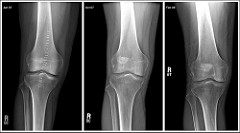 What exactly is a luxating patella? A luxating patella is known as a “floating kneecap”, and I often liken it to the disease Osgood Schlatters in people. Though the process by which it occurs may differ, the actual movement of the kneecap is quite similar. With luxating patella, the kneecap will pop in and out of the trochlear groove, sometimes leading to limping, pain, or more severe deformities.
What exactly is a luxating patella? A luxating patella is known as a “floating kneecap”, and I often liken it to the disease Osgood Schlatters in people. Though the process by which it occurs may differ, the actual movement of the kneecap is quite similar. With luxating patella, the kneecap will pop in and out of the trochlear groove, sometimes leading to limping, pain, or more severe deformities.
Anatomy of the knee joint is fairly simple in both humans and animals. The patella sits at the distal end of the femur and acts as somewhat of a connector in the joint. There are two grooves sitting on either side of this structure meant to hold it in place. Nothing is connected via bone, and for this reason the kneecap is mobile, allowing the hindlimb to move fairly freely and with ease.1 The musculature surrounding this joint is what helps to stabilize and maintain proper structure. With a luxating patella, the structure most often affected is the divot, or grooves encapsulating the kneecap. When the grooves are too shallow, the kneecap has little resistance and can easily pop in and out of place; in other words it luxates. The grade of patellar luxation often determines the prognosis, and for that reason we will take a look at the various types.
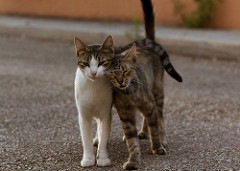
Grade 1:
A grade 1 patellar luxation is infrequent and inconsistent. Some days the kneecap will “pop” out and within seconds will right itself. Pain is rarely noted and there may be an occasional limp, though nothing too severe.1,2,3
Grade 2:
A grade 2 luxation tends to be a bit more regular, with the kneecap popping out regularly upon flexion, and correcting itself the majority of the time during extension of the knee. An animal with this grade may have a fairly consistent lameness that is resolvable depending on knee positioning. Swelling, inflammation, and pain may also be present.1,2
Grade 3:
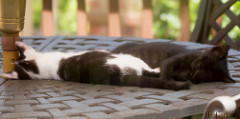 A grade 3 luxation involves a kneecap that is out of joint more than fifty percent of the time, and rarely corrects itself without help. This type can be fairly painful and is often associated with several other bony disorders in various joints. Often times with Grade 3 luxations there will be sacroiliac joint problems due to the way an animal must compensate biomechanically. Cruciate tears also tend to be more frequent with patellar luxation cases on either the affected or the unaffected limb.2
A grade 3 luxation involves a kneecap that is out of joint more than fifty percent of the time, and rarely corrects itself without help. This type can be fairly painful and is often associated with several other bony disorders in various joints. Often times with Grade 3 luxations there will be sacroiliac joint problems due to the way an animal must compensate biomechanically. Cruciate tears also tend to be more frequent with patellar luxation cases on either the affected or the unaffected limb.2
Grade 4:
A grade 4 luxation is by far the most severe and most often recommended to have surgery. Cases with this luxation have very shallow trochlear grooves and it seems near impossible for the patella to actually stay put. With every step the kneecap will tend to float, often being associated with a loud popping noise. Animals with this grade are usually lame, lethargic, and in pain. Bony deformities are more prevalent elsewhere in the hind-end because of the severity of the luxation.3
Small breed dogs and cats are most commonly diagnosed with luxating patella.3 On occasion larger breed dogs have been known to have it, though the kneecap will luxate laterally rather than medially.1 The prognosis is by no means bleak for these animals and the majority of them live very long and happy lives.
Depending on the grade of the luxation, traditional veterinary medicine may recommend surgery. Surgery can entail making the groove itself more distinct, releasing the fascia on the side of the luxation (usually medially for small breed animals)1, or tightening the joint capsule itself to help keep the kneecap in place. Surgery for a luxating patella is not necessarily the only option and because this condition is not life threatening it may behoove the owner to take a more 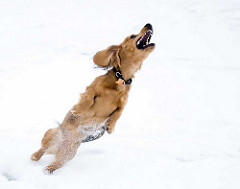 alternative approach before going under the knife. As with all surgery there are inherent risks associated with anesthesia and infection. With patellar surgery, however, there are a few more to consider. These include a misplaced pin, a repair collapse due to an inability to keep an animal “quiet” so he or she can heal, and a completely failed surgery (occurring in about 10% of canines).3
alternative approach before going under the knife. As with all surgery there are inherent risks associated with anesthesia and infection. With patellar surgery, however, there are a few more to consider. These include a misplaced pin, a repair collapse due to an inability to keep an animal “quiet” so he or she can heal, and a completely failed surgery (occurring in about 10% of canines).3
Alternative options abound when it comes to patellar luxation. Physical therapy and muscle strengthening is one of my personal favorites. When the muscle surrounding a joint is properly activated and utilized, a joint will not have as much load to bear. If the musculature around a luxating patella is improved via exercise, it may help to lessen the frequency of luxation and could even resolve it completely. Visualize a kneecap being cradled by the muscles around it, therefore it doesn’t have the ability to luxate as easily. This is the type of rehab I personally did for my Osgood Schlatters disorder, and within months all was healed.
 Maintaining a healthy weight for your animal is imperative. Overweight animals put an increased load on their joints, and when the joint is already weakened because of a “floating kneecap” the damage can be much more severe. Joint supplementation such as chondroitin and glucosamine are also wonderful for prevention of fluid build up, inflammation, and maintaining good joint health.3 In addition to supplementation, the actual diet of your pet should be anti-inflammatory. What does this mean exactly? All food is hot, cold, or neutral. Meaning some foods are pro-inflammatory (Omega 6, grains, corn) while others are anti-inflammatory (Omega 3, fish). Feeding a diet that is more cooling can greatly help decrease the inflammatory response in animals with luxating patella.
Maintaining a healthy weight for your animal is imperative. Overweight animals put an increased load on their joints, and when the joint is already weakened because of a “floating kneecap” the damage can be much more severe. Joint supplementation such as chondroitin and glucosamine are also wonderful for prevention of fluid build up, inflammation, and maintaining good joint health.3 In addition to supplementation, the actual diet of your pet should be anti-inflammatory. What does this mean exactly? All food is hot, cold, or neutral. Meaning some foods are pro-inflammatory (Omega 6, grains, corn) while others are anti-inflammatory (Omega 3, fish). Feeding a diet that is more cooling can greatly help decrease the inflammatory response in animals with luxating patella.
Lastly, chiropractic treatment can do wonders for animals with luxating patella. The premise behind chiropractic is easy to understand. Structure determines function. When there is abnormal structure present, there will be dysfunction. A luxating patella is in fact abnormal structure, and the joints both above and below the affected one as well as the rest of the body will compensate for the abnormality. Chiropractic will address both the patellar luxation as well as all other structural abnormalities that may be a result of the abnormal joint. I currently see several clients with luxating patella, and almost every single one has noticed complete resolution of lameness, limping, and pain. One of my biggest concerns with these clients is the hip and ankle joint. Canines in particular tend to compensate for the floating kneecap in these joints and through chiropractic adjustments I am able to help stabilize them. A joint that is stable is less likely to develop arthritis or become inflamed because there is no abnormal weight bearing. Overall the experiences have been overwhelmingly positive. Whether one chooses conventional or traditional therapies for an animal with luxating patella, it is important to know that the options are many and the prognosis very good.
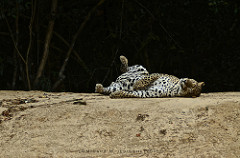
Sources:
- 1) Veterinary Merck Manual- Luxating Patella.
- http://www.dogsnaturallymagazine.com/treatment-options-for-the-luxating-patella/
- http://healthypets.mercola.com/sites/healthypets/archive/2011/01/11/recognising-floating-knee-caps-in-pet-dogs.aspx
Photo Credit:
Knee – Coronal via photopin (license)
surface-to-air-dachshund via photopin (license)
Racing on the Beach via photopin (license)
Chasing Waves 03 via photopin (license)
Everybody Wants To Be A Cat via photopin (license)
Leopard via photopin (license)
13JUL14.1: sacked out via photopin (license)


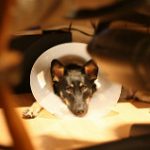

Leave a Reply
Want to join the discussion?Feel free to contribute!